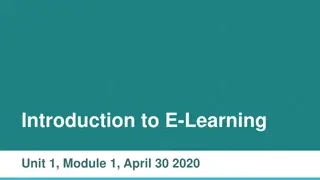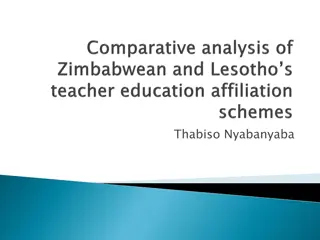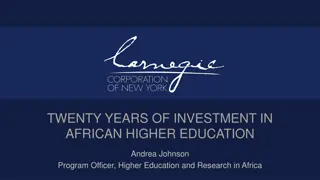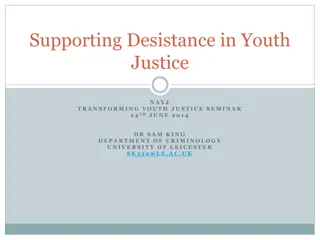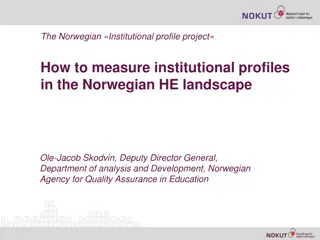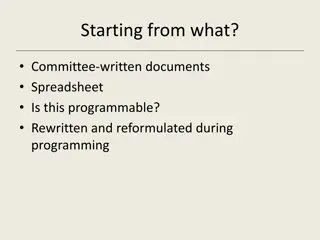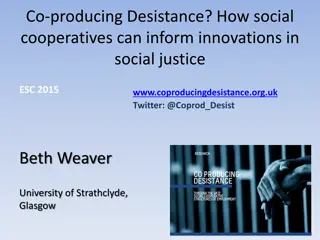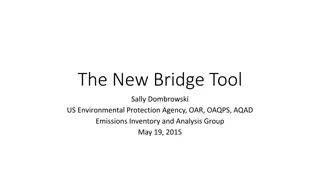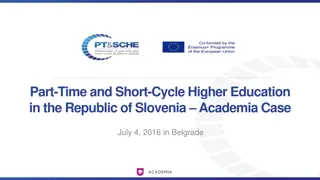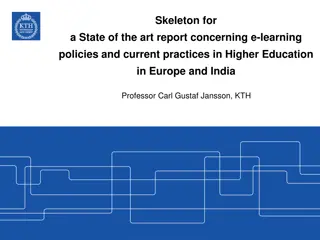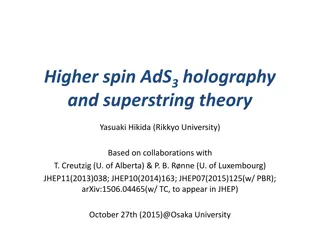Exploring Higher Education as a Tool for Desistance
This research delves into the potential of higher education in supporting desistance from offending behavior and cultivating new identities. It focuses on aspirations, barriers, and support needed for individuals with criminal convictions to engage with higher education outside of the prison environment. The study involves 16 participants with diverse backgrounds, highlighting their demographics, aspirations, and challenges. The research aims to understand whether higher education can act as a catalyst for positive change in individuals transitioning from a criminal past to a brighter future.
Download Presentation

Please find below an Image/Link to download the presentation.
The content on the website is provided AS IS for your information and personal use only. It may not be sold, licensed, or shared on other websites without obtaining consent from the author. Download presentation by click this link. If you encounter any issues during the download, it is possible that the publisher has removed the file from their server.
E N D
Presentation Transcript
Conversations: Community, Higher Education & Desistance Debbie Jones & Mark Jones
Setting the Scene Desistance marriage, family, employment, health, & education Bridging social capital (Weaver & McNeill, 2015: 101) A replacement self / non-criminal identity (Giordano et al, 2002 & Abeling-Judge, 2016) Hook for change (Runnel, 2017) The pains of desistance (Nugent and Schinkel, 2016) HE & D still under-researched especially within community development setting Widening Access and the Neo-Liberalist University (Evans et al, 2017) PET (2017) HE sector could do more to support belonging
Aims & Questions Explore whether higher education is viewed as a hook for change by adults outside of the prison environment. Does HE have potential to raise aspirations & support desistance and new identities. 1. What are the aspirations to study within HE? 2. What barriers/problems/challenges do this group envisage in engaging with HE? 3. What support would this group need to engage with HE? 4. How might HE support desistance from offending?
Research Design AOP approach & Research with and not on Multiple Stakeholders Include http://include-uk.com/who-we-are/ Prison Education Trust Prison staff Local FE College Pictorial Narrative Mapping & Analysis (Lapum et al., 2015) Focus group, short survey and stakeholder focus group
Demographics 16 participants 3 women one male to female transgender person 13 males one female to male transgender person All white aged early 20 s to 60 s All lived in Swansea locality All had a criminal conviction Majority had served custodial sentences Convictions were for drink driving, assault, drug use 12 males had substance use issues Most experienced significant childhood & adolescent trauma All reported mental health ranging from anxiety to atypical personality 3 had experience of HE (2M & 1F)
Aspirations Home Family & Friends Career / Employment Health & Well-Being Security & Future I just want to survive
Barriers to Aspiration Money Crime Identity Mental Health Travel The System They don t want people on courses with problems
Educational Experiences Bullying Isolation Trauma Not the right time for me Prison Education starting point for many
University Suspicion & Mistrust Intimidating Stigma Not flexible Won t get me a job Only after the money BUT ..Would love to go! When I walk across campus I hold my head up high..it feels a good place.
Access & Possibilities of HE Opens doors for future prepare for work Builds confidence & skills I d have more confidence Social and Health element Be less lonely Access, support, funding, small groups
Starting the Conversation Universities need to develop holistic support for complex needs University-prison partnership within widening access Development of HE partnership with community organisations Specific education & training for HE staff Introductory & free taster sessions and programmes Cultural change in HE environment
Mark Jones HigherPlainResearchEducation@gmail.com Debbie Jones Deborah.A.Jones@Swansea.ac.uk
References Abeling-Judge, D. (2016). Different Social Influences and Desistance From Crime. Criminal Justice and Behavior, 43(9), 1225-1241. Cloud, W. and Granfield, W. (2009) Conceptualising recovery capital: Expansion of a theoretical construct, Substance Use and Misuse, 42, 12/13, 1971-1986. Evans, C., Rees, G., Taylor, C., & Wright, C. (2019). Widening Access to higher education: The reproduction of university hierarchies through policy enactment. Journal of Education Policy, 34(1), 101-116. Giordano, P., Cernkovich, S., & Rudolph, J. (2002). Gender, Crime, and Desistance: Toward a Theory of Cognitive Transformation 1. American Journal of Sociology, 107(4), 990-1064. Lapum, J., Liu, L., Hume, S., Wang, S., Nguyen, B., Harding, K., . . . Megan Nguyen, L. (2015). Pictorial Narrative Mapping as a Qualitative Analytic Technique. International Journal Of Qualitative Methods, 14(5), International Journal Of Qualitative Methods, 2015 Dec, Vol.14.
McNeill, F. (2018) Rehabilitation, Corrections and Society. Retrieved July 01, 2019, from http://eprints.gla.ac.uk/159625/7/159625.pdf McNeill, F. (2019). Making Rehabilitation Work for Ex-prisoners. Retrieved June 03, 2019, from https://esrc.ukri.org/news-events-and-publications/news/news- items/making-rehabilitation-work-for-ex-prisoners/ Nugent, B., and Schinkel, M. (2016), The Pains of Desistance. Criminology and Criminal Justice, 16(5) 568-584. PET (2017). To be truly inclusive, universities must help prisoners feel they belong. Available at: https://www.theguardian.com/higher-education- network/2017/aug/16/to-be-truly-inclusive-universities-must-help-prisoners-feel- they-belong Runell, L. (2017). Identifying Desistance Pathways in a Higher Education Program for Formerly Incarcerated Individuals. International Journal of Offender Therapy and Comparative Criminology, 61(8), 894-918. Weaver, B., & McNeill, F. (2015). Lifelines: Desistance, Social Relations, and Reciprocity. Criminal Justice and Behavior, 42(1), 95-107.






